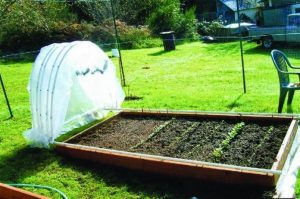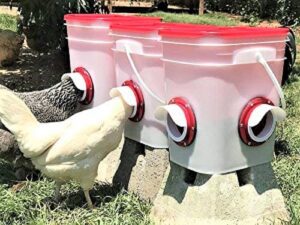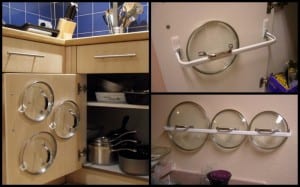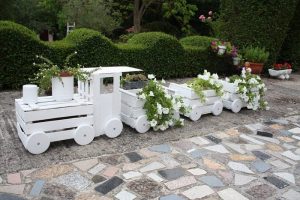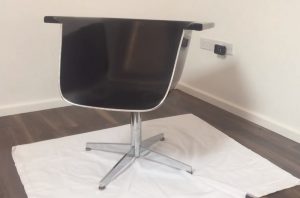Last Updated on July 8, 2023 by teamobn
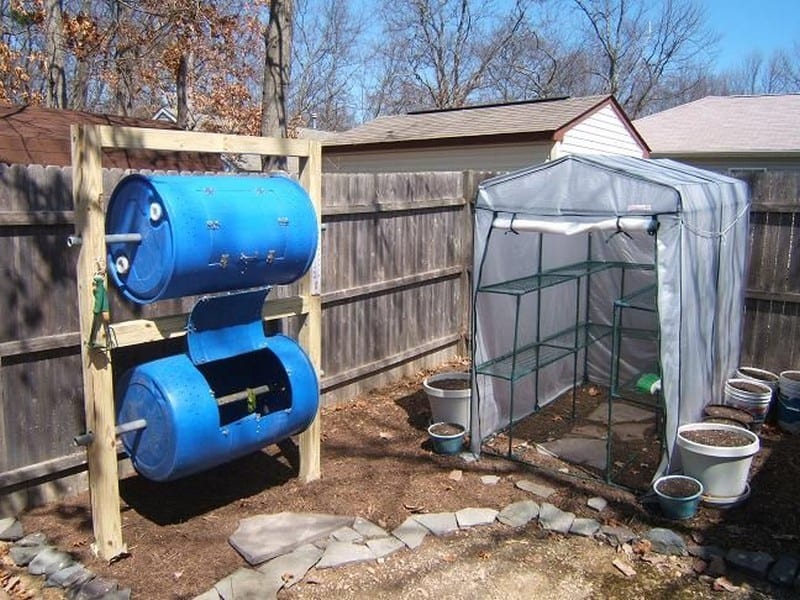
There are lots of good reasons to compost. Composting allows you to save money and resources even as it reduces your impact on the environment. Of course, most gardeners know the value of rich, dark, earthy compost in growing healthy plants.
Adding compost to your garden will not only fertilize, it actually feeds your soil with a diversity of nutrients and microorganisms that will improve plant growth.
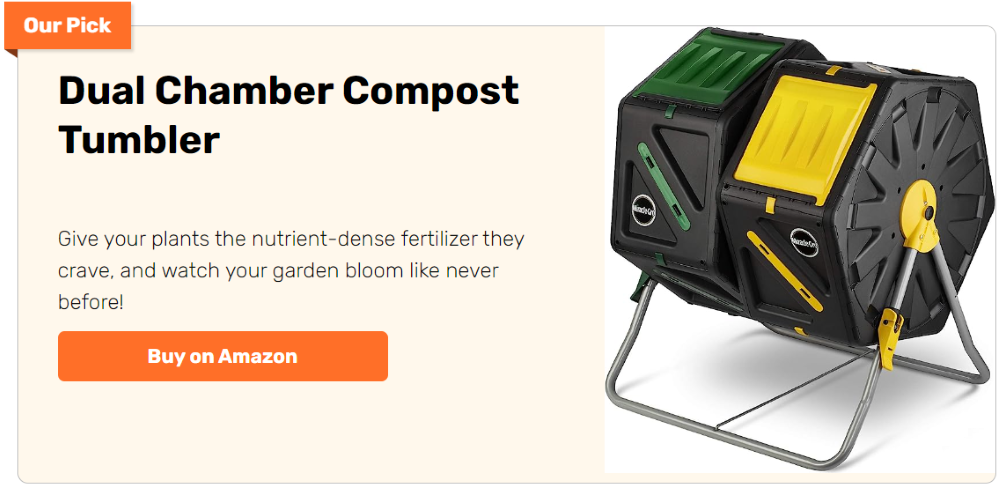
This double-decker drum composter is a sturdy, rodent- and rot-free container for all your compost. And it allows you to easily turn your compost which helps it break down faster.
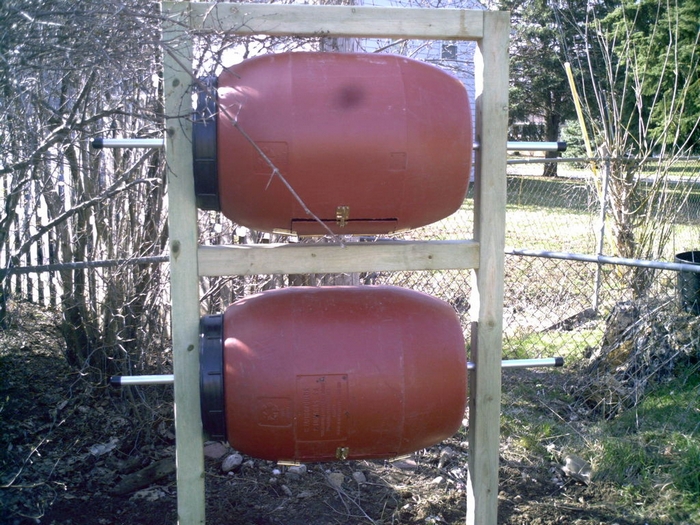
Click on any image to start the lightbox display. Use your Esc key to close the lightbox.![]()

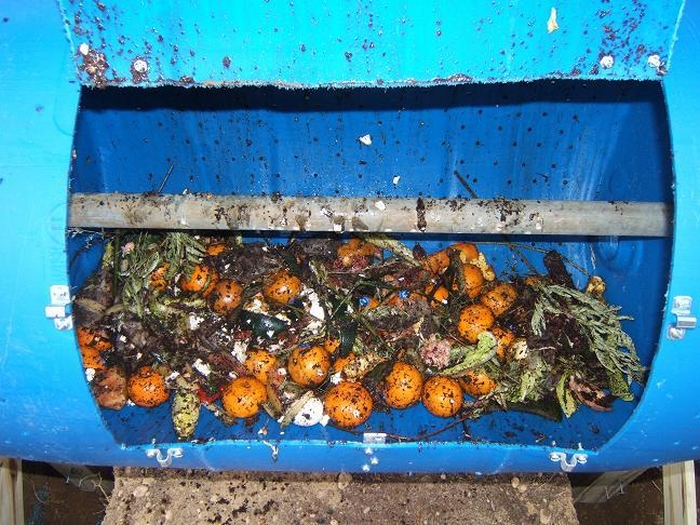
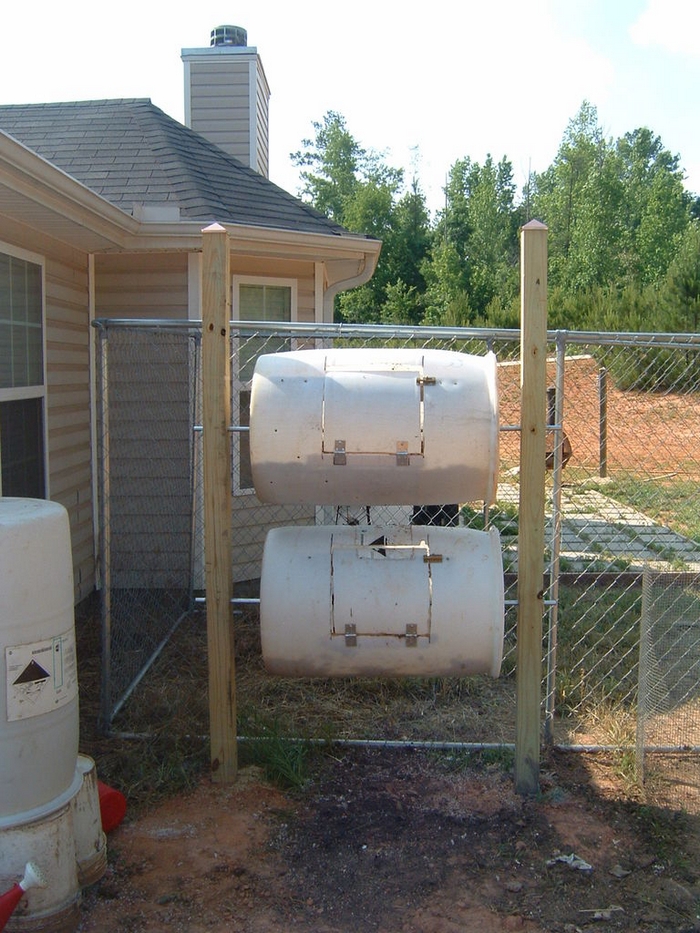

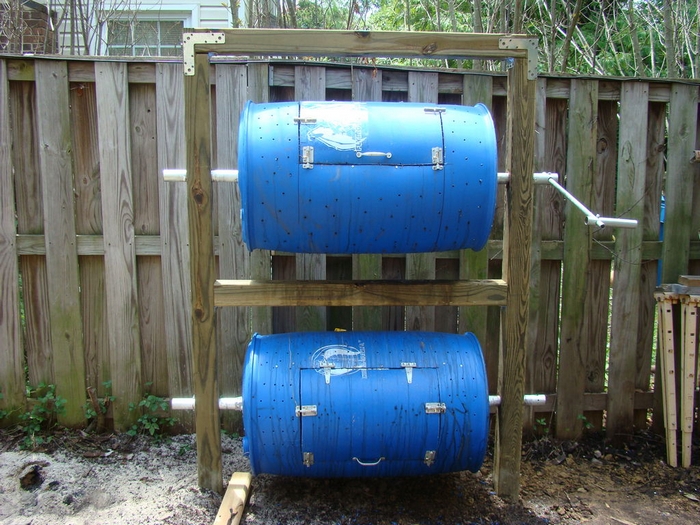
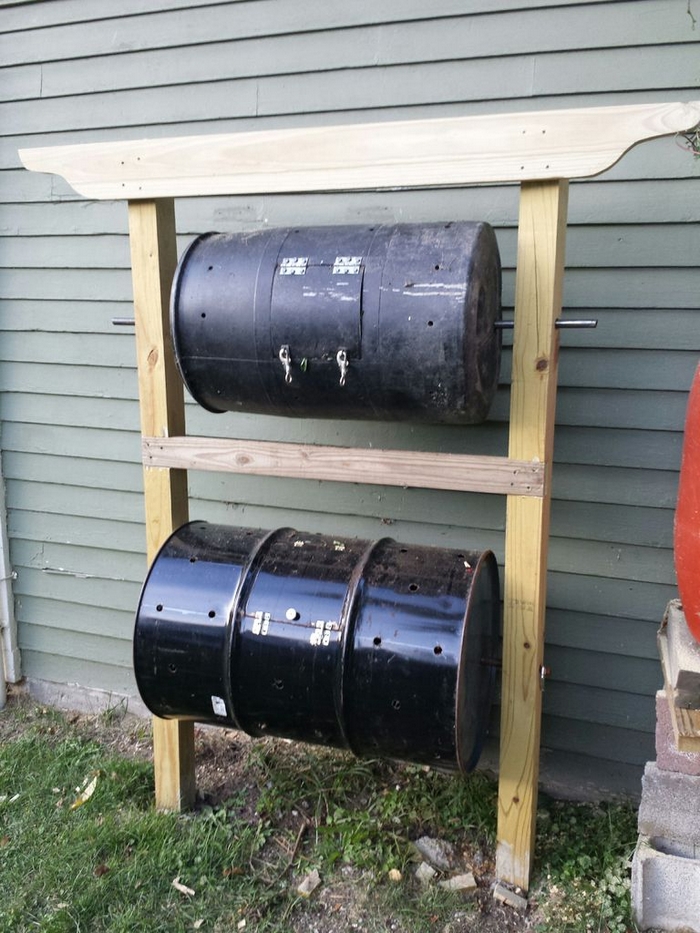
Materials:
- 3 pcs – Pressure treated 8′ long 4×4 Timber
- 1 pc – Pressure treated 8′ long 1×4 Timber
- 4 Stakes
- 2 pcs – 5′ long Galvanized Poles
- 2 55 gallon Drums
- Galvanized Lag Bolts
- Corner and Flat Braces
- Drawer Handles
- Hinges
- Barrel Locks
- Nuts and Washers
- Exterior Screws
- Cement
Tools:
- Circular/Table Saw
- Rotary Saw
- 2″ Hole Saw
- Cordless Drill
- Shovel
Steps To Build A Double-Decker Drum Composter
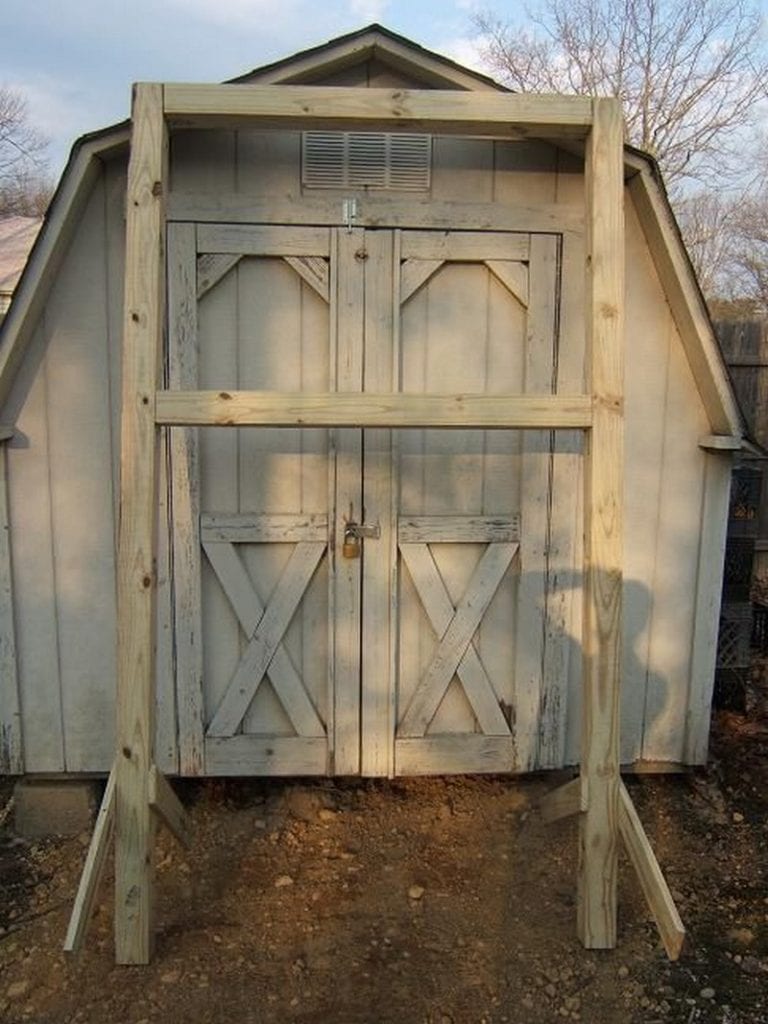
The frame of this DIY composter consists of 3 pressure treated 4×4’s and 1 pressure-treated 1×4, all eight feet long. One 4×4 was cut exactly in half and the 1×4 was cut into quarters – they were to become the 2 beams and 4 stakes.
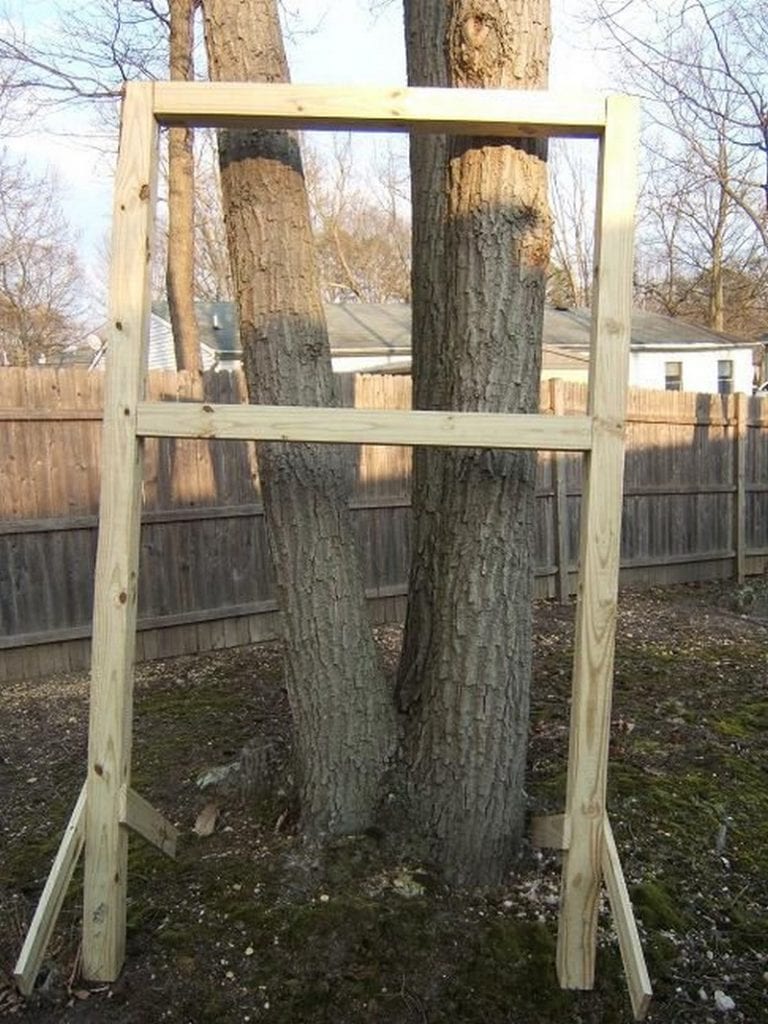
I drilled pilot holes through the posts and into the beam of the DIY composter and held them together with galvanized lag bolts. Each of the corners where the beam meets the post got corner braces and the top got flat braces. The braces are meant for extra support for the my composter, since the barrels may become heavy. The space between the top beam and bottom beam was 3 feet.
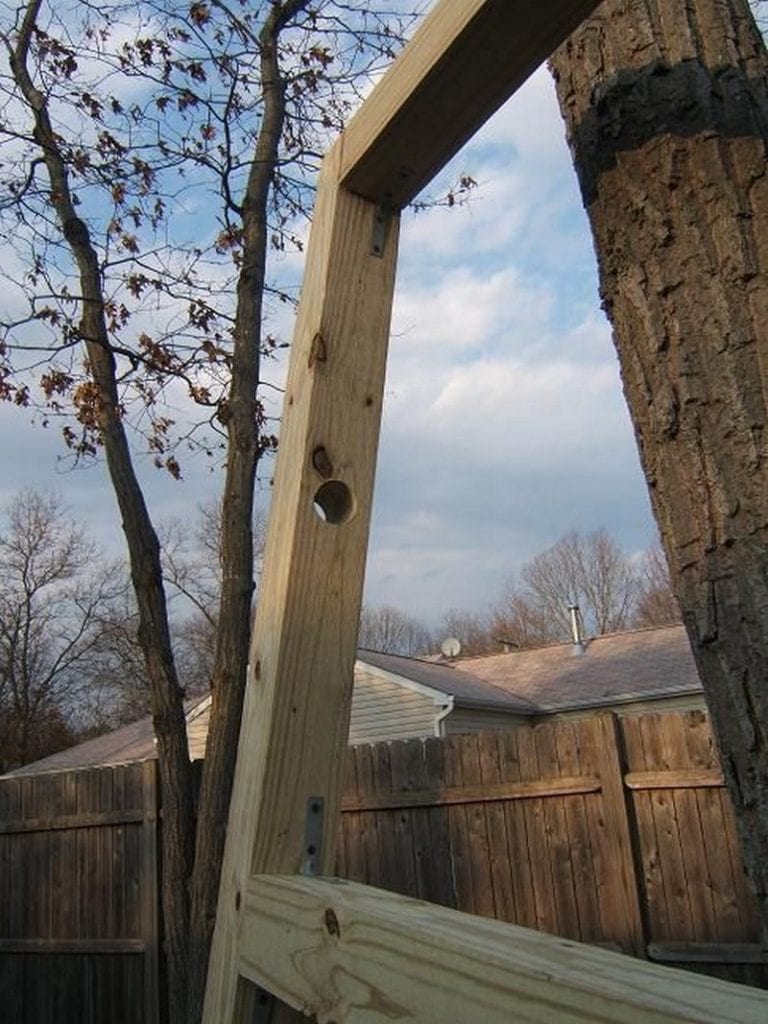
I used a 2-inch hole saw to cut holes into the sides of the posts so they can hold the poles later on.
Then, I used some exterior screws to fasten the stakes to the bottom of the posts. The entire frame gets cemented into the ground later and the 4 stakes offer additional support to the frame.
At the bottom of the posts and stakes, I drilled some screws partially into the wood to hold them into the cement better.
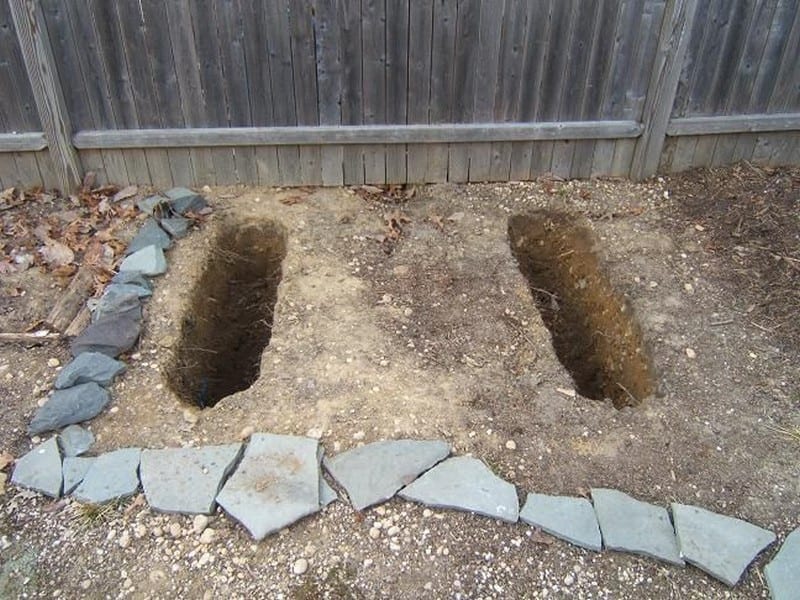
After the frame was complete and I decided where it was going to go, I dug two trenches for the posts of my DIY composter and stakes to go into.
Continued Page 2…


